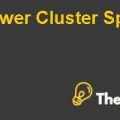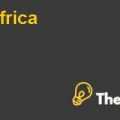
Introduction
Otis Elevator was founded by Elisha Grave Otis, and the company was named after its founder’s name. The core business of Otis Elevator was manufacturing, designing, installation and providing services to the customers related to the elevators and other products such as escalators. In 2002, Bousbib was elected as the president of Otis Elevator. The headquarters of the company was situated in Farmington, Connecticut, consisting of international facilities to the countries like Japan, France, Germany, Spain, Korea and China.
The company was operating in different regions such as North and South America, Middle East, Europe, Asia and most importantly Japan. By the year 2014, Otis was having around 1.5 million elevators and 100,000 escalators operating in different parts of the world. Most of the elevators and escalators are installed in 10 of the world’s 20 tallest buildings. There were around 60,000 employees working at Otis Elevator.
There was an increase in revenue recorded in the year 2013. The revenue was estimated to be $8 billion in 2013, which was higher as compared to $6 billion in the year 2000. Approximately, 80% of the revenue was generated from outside the United States. The competitors of Otis Elevator include Hitachi, Kinetek, Tatung, Mitsubishi Electric, Schindler Holding, KONE and Toshiba.
The operating profit margin attained by the competitors is estimated to be 5%-10%. China has been a great market for Otis Elevator regarding the elevators. Otis aggressively grew from 2000-2014 via acquiring elevator business in China. China has been a great country for different companies working in escalator industry.
How did the combined use of business process re-engineering and enablingIT make these two initiatives (OTISLINE and e*Logistics) successful?
Otis Elevator introduced a customer service system and named it as OTISLINE customer service. The Otis Elevator started this service so that the company can respond to its endless customer base in less time. Moreover, the advantages of this model were to bring standardization in the operations of Otis. One of its objectives is to take less sales time and processing the order.When the project is being conducted in big numbers and spreading it in many countries, it helps in the allocation of the resources that are required by the project.
Through e*Logistics, it will be able to connect sale, operational area, and factory using the Web, as this can create value from the value chain. If the contract was signed, the installation would have been conducted to the customer and the installation was evaluated from the process which was described in the contract. The main objective of the e-Logistics was to kill the time taken in different processes such as recording data, calculation of finance and reducing the inventory level.
The implementation of e-Logistics was based on automating the entire value chain and flow of the information from sales order processing to order fulfillment to field installation and at the end, closing the activities. Through e-Logistics and OTISLINE, there was a dramatic change in the culture of the organization and the way of working. There are numerous benefits seen in the business processes of Otis Elevator.
For instance, business process re-engineering was taking place all over the company. With the help of the IT system, e*Logistics assisted the business process re-engineering, which made e*Logistics and OTISLINE successful. For instance, in the Order Fulfillment process, Otis Elevator developed the regional contract logistics centers (CLCs). CLCs were responsible for taking orders from the sales team and delivering the sales teams which required products on-time to their job time.
Through the induction of e*Logistics and OTISLINE services, CLC can easily take orders from the sales representatives and then contacting subsystem integrators (SSIs) for the products required by the sales representatives and delivering them the product in real time and in the specific region of the project.Through OTISLINE service the demands of the customers were identified and sales representatives worked according to those demands. Prior to e*Logistics, the process was manually done, thus, it caused many errors, miscommunication and wasting a lot of precious time....................................
This is just a sample partial case solution. Please place the order on the website to order your own originally done case solution.













